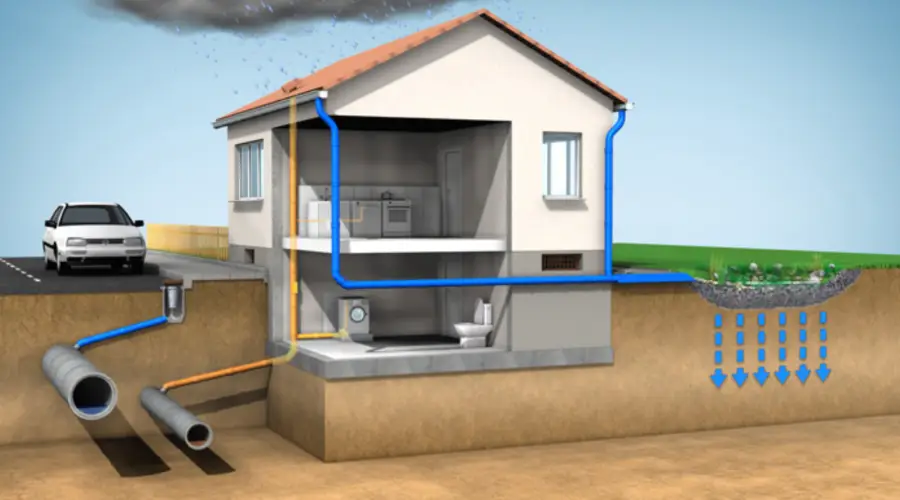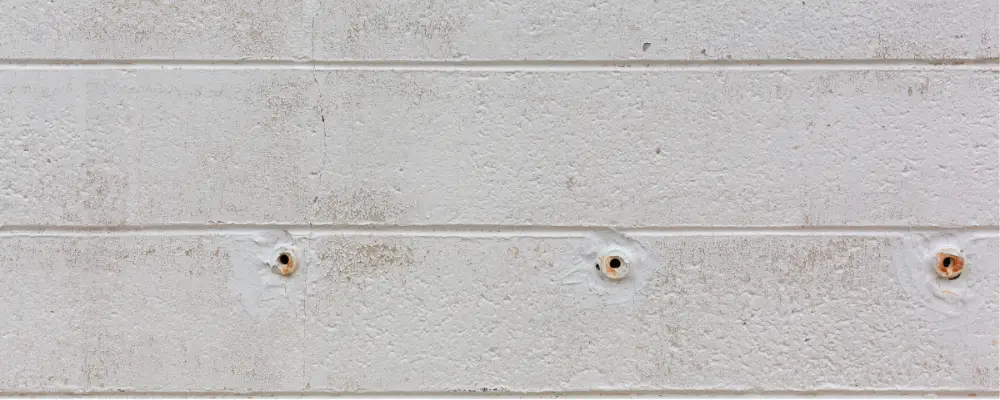Have you ever seen small openings within your home’s wall, and wondered, why these holes are kept on the wall? Those openings are called weep holes and play a major role in protecting the structural integrity of a building. This blog will explore weep holes, its types, importance, design, installation and everything else you need to know about weep holes.
What are Weep Holes?
Weep holes are small openings in the building that allow water to drain from the structure. It is typically used to prevent the collection of water, improve ventilation, and reduce hydrostatic pressure within the structure. They are most commonly found in masonry walls, cavity walls, window frames, retaining walls and places near foundations.
Importance of Weep Holes in Construction
Water Drainage

The primary function of providing weep holes is to drain water from the internal structure. When moisture deposits or infiltrates a wall, it causes various structural issues, such as material degradation, mould growth and structural failure.
Ventilation
Weep holes provide good ventilation within walls by drying out any trapped moisture, reducing the risk of moulds and decay. This helps in keeping the indoor atmosphere healthy and increasing the resistance of building materials.
Preventing Structural Damage
Effectively managing and mitigating the moisture levels using weep holes prevents the structure from water-related damages such as damping and structural damage.
Temperature Regulation
The weep holes allow air to pass through the structure, helping to regulate indoor temperatures and keeping the structure pleasant under different environmental conditions.
Protection Against Pests and Embers
Weep holes, along with screens and barriers, prevent insects, pests and embers that are attracted to moisture from entering the structure. They are highly used in bushy and fire-prone areas where insects may enter.
Types of Weep Holes
Open Head Joint Weep Holes
The open-head joint is the most common type of weep hole that is formed by scraping the vertical joints of the bricks or other masonry units. These weep holes are generally spaced at 21 inches intervals, and are effective in draining water from the wall joints. Open head joint weep holes usually include plastic weep vents to prevent rain and insects from entering the building
Cotton Rope Wicking Weep Holes
It is a type of weep hole that is formed using cotton ropes, usually 12 inches in length. In this type, one rope is placed at the joint and the other end extends to the cavity wall and the water is absorbed from one end of the rope and evaporates on the other end. This method is very efficient, however is time-consuming.
Tubes Weep Holes
A pipe is installed at a slight angle to drain the water through it, from the bottom of the mortar joints. Plastic pipes or clay pipes are used for draining and are suitable for in-situ concrete walls and thick masonry walls.
Corrugated Channel Weep Holes
Corrugated draining holes are placed at the bottom of the mortar bedding joint using technology, and are effectively used to quickly drain the water through numerous channels.
Common Locations and Applications of Weep Holes
- It is most commonly used in cavity walls at the base of the outer layer, above the flashing.
- It is used in retaining walls to incorporate a drainage system behind the wall.
- It can be visible in window and door frames, to discharge water from the internal structure.
- It can also be used at the base of the foundation wall, which is generally not seen.
Design Considerations
Placement and Spacing
Weep holes are usually located at the bottom of the wall, and placed at regular intervals of 30 to 90 centimeters. In brick veneer walls, the holes are placed at the bottom of the wall, and for retaining walls, they are placed at 4-foot intervals.
Size and Shape
The weep holes usually range from 0.635 – 1.27 centimetres in diameter. For retaining walls, the diameter of the weep holes varies from 3 to 10 centimetres. They are usually circular with elongated openings. However, the soil type and water volume play an important role in determining the size and shape of the weep holes.
Materials Used
Numerous materials are used for providing weep holes in construction including brick, stone, plastic, clay pipes and more, depending on the type of walls.
Installation Practices
- Weep holes are installed at the lowest points of the wall with spacing between 30 to 60 centimeters along the wall.
- Ensure that the surface is clean and free from any sort of dust, debris and cavities before installing weep holes.
- Install the type of weep holes, based on the design requirements. Each hole type has its unique characteristics and is useful for different construction types.
- After installing the weep holes, an inspection needs to be done to identify that they are properly placed, sized, and free from any sort of obstruction.
Maintenance and Inspection
- Weep holes require frequent maintenance at least once a year, especially in the rainy season.
- Gentle cleaning can be done with a small brush, compressed air, or a gentle stream of water.
- It is important to keep the places around the weep holes free from all sorts of impurities, obstructions and vegetation.
- Proper landscaping and limiting water usage will reduce the risk of pest attacks.
Common Misconceptions
Myth: Weepholes are used only for aesthetic purposes
- Fact: Weepholes are crucial in preventing water damage and structural problems.
Myth: Weepholes are only utilised in certain climatic conditions
- Fact: Weep holes protect the structure from water and moisture damage, and are suitable for all climatic conditions.
Myth: Weep holes are only suitable for masonry walls
- Fact: They are suitable for brick veneer walls, retaining walls, foundations, windows, and door frames.
What To Do If Your Home Doesn’t Have Weep Holes?
If your home is built without any weep holes, you can consult an experienced professional to identify the risks of water damage and the necessity of weep holes. If possible drill small holes or remove mortar joints to create weep holes.
It is essential to ensure that the water drainage around the foundation is effective and seepage doesn’t affect the structure. In case of water risks, a waterproofing membrane on the exterior walls can be used to prevent water ingress.
Conclusion
Weepholes are small but essential components in construction and protect the structure from potential water damage, ensuring structural integrity. Proper planning and choosing the right weephole techniques can mitigate the water damage risks of the building.

